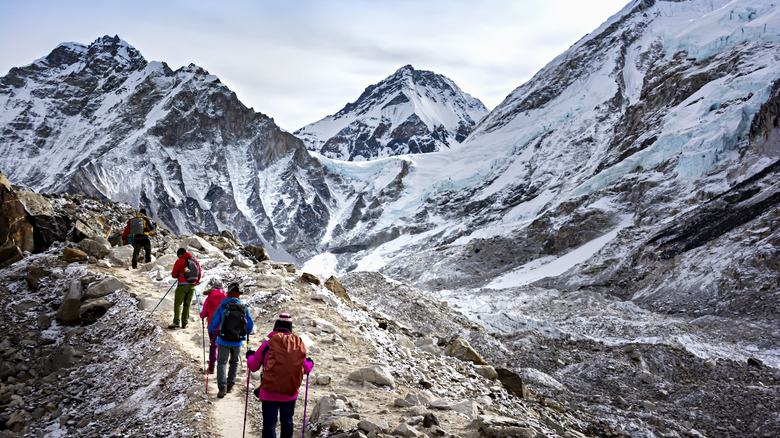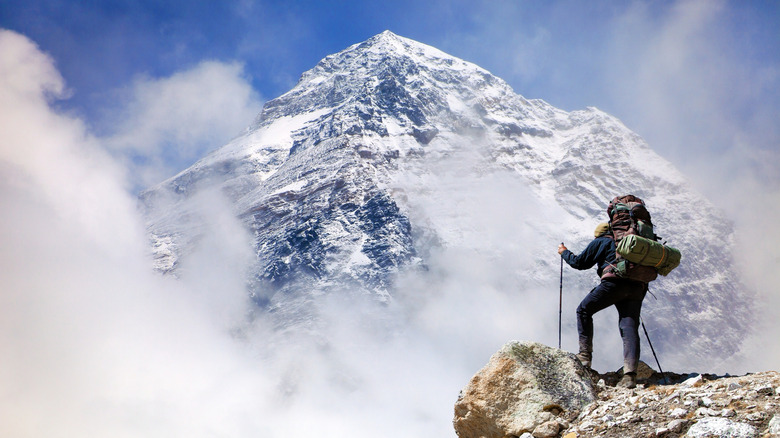If You've Been Planning To Climb Everest, Prepare For A Big Jump In Permit Fees
There are many fascinating facts about Mount Everest — it's over 29,000 feet tall and still growing (studies have found it has gained between 49 and 164 feet in height over the past 89,000 years, via News.com.au). But if climbing Mount Everest is on your bucket list, you'll need to budget a little extra. Beginning September 1, 2025, Nepal is raising the fee to climb the famous mountain from $11,000 to $15,000 for its busiest time, the spring season from April to May. The low season is getting a price hike, too, going to $7,500 during fall (September to November) and $3,750 in winter (December to February).
This is the first time prices to climb the mountain have been raised in nearly a decade, and Nepalese officials say it's about time, as the fees had not been reviewed in a long while. Nepal's economy relies on mountain climbing tourism for a nice chunk of cash, especially since eight of the world's tallest mountains are within its borders. While this increase might seem steep, most climbers won't be that shaken up about it. The price to climb Mount Everest is higher than you think, with expeditions already costing anywhere from $30,000 to $200,000, depending on the level of service and support.
What the permit hike means for Mount Everest climbers
Only a limited amount of Everest permits are granted each year for climbers, and some even argue that the average of 300 permits handed out every year is too high. It's hard to say for now if these higher fees will have an impact on how many people apply for permits. But it's unlikely this incremental price hike will be a deal breaker for serious climbers.
Even with the higher permit fee, the real cost of climbing Everest goes far beyond the booking fees. Many people have died climbing Mount Everest, and cheap expeditions often cut corners on safety. Veteran climber Jake Meyer explained to Business Insider that "the 'cheaper' your ticket to climb, the higher the likelihood of death." So climbing Everest is not the time to pinch pennies.
Nepal hasn't said what these extra funds will go toward. But the mountain is known for having some ongoing maintenance issues, from picking up waste left behind to rescuing climbers in trouble (or, sadly, removing the bodies of those who didn't make it). The extra funds could support more of these efforts to keep the mountain in good shape for future climbers.

